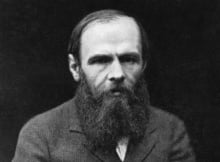"There is no subject so old that something new cannot be said about it"
About this Quote
The idea expressed by Dostoevsky challenges the notion that originality is bound by the limits of what has come before. Even the most ancient, thoroughly examined topics, love, death, suffering, happiness, the nature of good and evil, can be approached with fresh insight. Human experience isn't static; each generation brings its own ideas, perspectives, and emotional contexts that reshape our understanding of perennial subjects. As society evolves, so do language, philosophy, art, and science, offering new lenses through which timeless issues can be explored.
Individuality plays a significant role. Every person’s unique combination of experience, temperament, and cultural background influences their interpretation and expression of even the most familiar themes. When an artist paints a landscape, they see not just the hills and sky, but their personal memories, moods, and desires--elements that no other painter can replicate in quite the same way. Similarly, philosophers, scientists, and writers, through the prism of their era and personality, revisit old questions and, perhaps unknowingly, illuminate previously unnoticed aspects.
Moreover, our relationship with familiar subjects is far from complete. Questions about love, justice, and mortality remain central because they cannot be fully resolved; their complexity ensures that new generations find meaning and different answers. Advances in knowledge and changes in society only broaden our capacity to comment meaningfully on what had once seemed exhausted.
The enduring themes of human existence act as a foundation rather than a cage. Creative thought is an ongoing conversation rather than a recitation of platitudes. What matters is how new life, perspective, and subtlety can be brought to these topics, challenging or reaffirming their relevance. The inexhaustibility of old subjects signals the richness of both the world and the human mind, a reminder that our capacity to perceive and interpret is boundless, however ancient the material that inspires us.
About the Author
